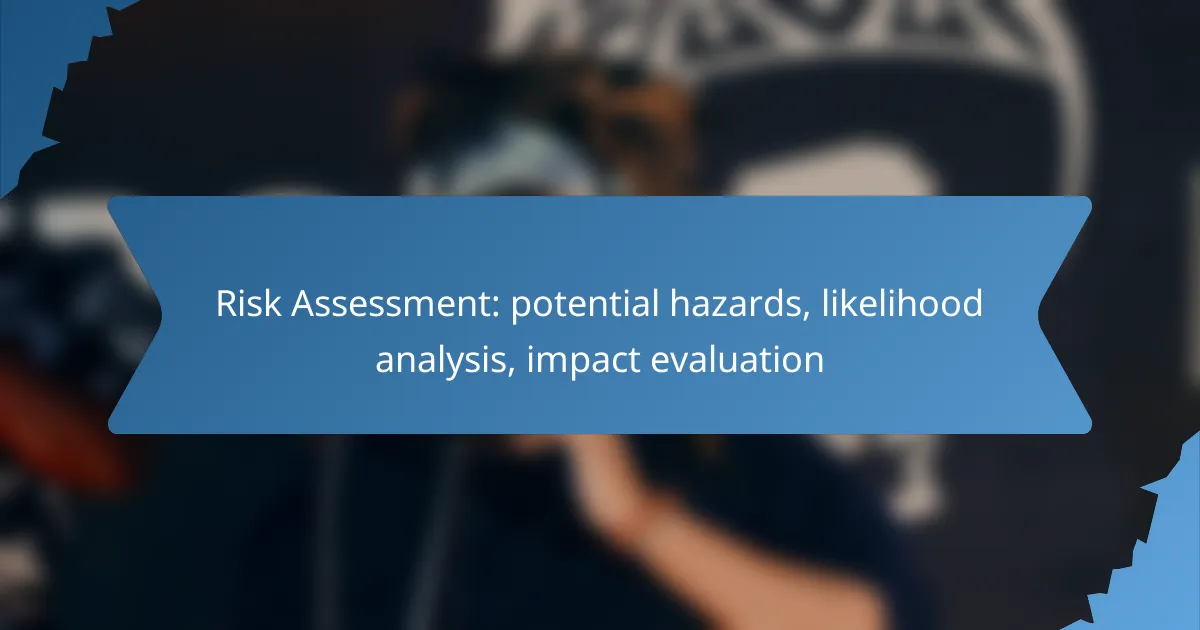Risk assessment is a critical process that identifies potential hazards, including environmental, operational, financial, regulatory, and technological risks. By analyzing the likelihood of these hazards and evaluating their potential impacts, organizations can prioritize their risk management strategies effectively, ensuring they address the most significant threats to their operations and stakeholders.
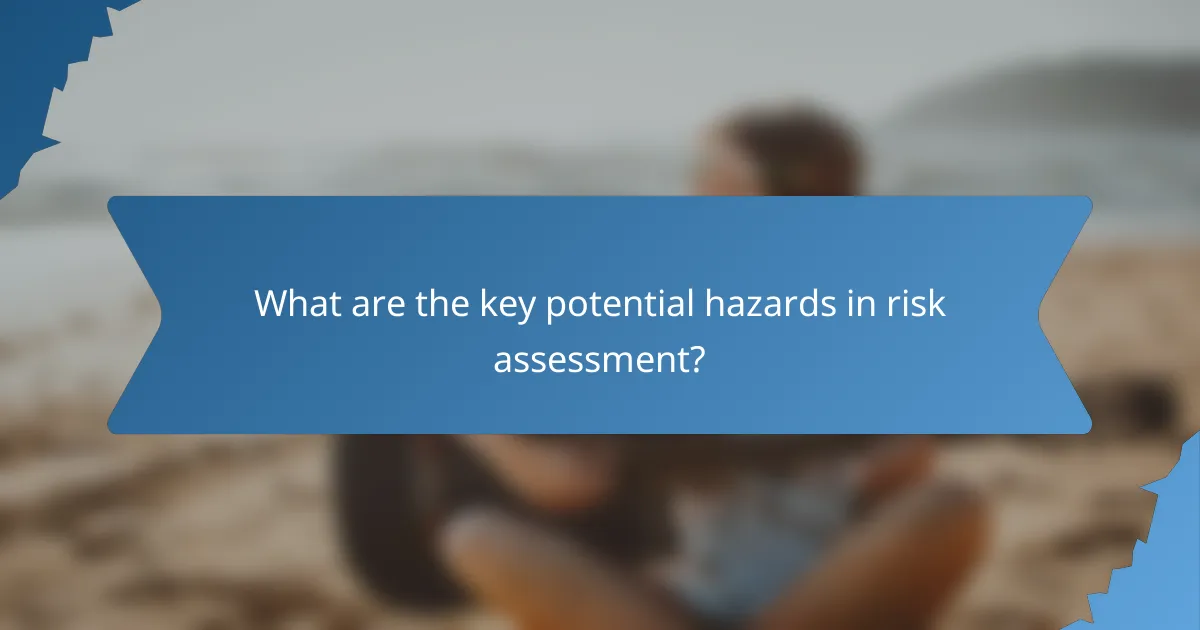
What are the key potential hazards in risk assessment?
Key potential hazards in risk assessment include environmental, operational, financial, regulatory, and technological risks. Identifying these hazards is crucial for evaluating their likelihood and potential impact on an organization.
Environmental hazards
Environmental hazards refer to risks arising from natural or human-induced events that can affect an organization’s operations. These may include natural disasters like floods, earthquakes, or industrial pollution. Organizations should assess their location and operational practices to identify specific environmental risks.
To mitigate environmental hazards, companies can implement sustainability practices, conduct regular environmental impact assessments, and develop emergency response plans. For example, businesses in flood-prone areas should consider flood defenses and insurance coverage.
Operational hazards
Operational hazards are risks that arise from day-to-day business activities, including equipment failure, human error, or inadequate processes. These hazards can disrupt operations and lead to financial losses or safety incidents. Organizations should regularly review their operational procedures to identify weaknesses.
To minimize operational hazards, companies can invest in employee training, conduct routine maintenance on equipment, and establish clear protocols for emergency situations. Implementing a continuous improvement approach can also help in identifying and addressing potential operational risks.
Financial hazards
Financial hazards encompass risks that can negatively impact an organization’s financial stability, such as market fluctuations, credit risks, or unexpected expenses. These hazards can arise from external economic factors or internal financial mismanagement. Organizations should regularly analyze their financial health to identify vulnerabilities.
To manage financial hazards, companies can diversify their revenue streams, maintain a robust cash reserve, and conduct regular financial audits. Establishing a budget and monitoring expenses can also help in mitigating unexpected financial risks.
Regulatory hazards
Regulatory hazards involve risks associated with non-compliance with laws and regulations that govern business operations. These can include environmental regulations, labor laws, and industry-specific compliance requirements. Failing to adhere to regulations can result in fines, legal action, or reputational damage.
To navigate regulatory hazards, organizations should stay informed about relevant laws and regulations, conduct compliance audits, and provide training for employees on compliance issues. Engaging with legal experts can also help in understanding and managing regulatory risks effectively.
Technological hazards
Technological hazards refer to risks related to the use of technology, including cybersecurity threats, system failures, or outdated technology. As organizations increasingly rely on technology, these hazards can lead to data breaches, operational disruptions, or loss of competitive advantage. Regular assessments of technology infrastructure are essential.
To mitigate technological hazards, companies should implement robust cybersecurity measures, conduct regular system updates, and invest in employee training on technology use. Developing a disaster recovery plan can also help organizations respond effectively to technological failures.

How to analyze the likelihood of hazards?
Analyzing the likelihood of hazards involves assessing how probable it is for specific risks to occur. This process helps organizations prioritize their risk management efforts based on the potential frequency of these hazards.
Qualitative analysis methods
Qualitative analysis methods focus on subjective assessment techniques to evaluate the likelihood of hazards. Common approaches include expert judgment, brainstorming sessions, and focus groups, where participants discuss and rank risks based on their experiences and insights.
For example, a team might categorize risks as low, medium, or high likelihood based on historical data and expert opinions. This method is particularly useful when quantitative data is scarce or when rapid assessments are needed.
Quantitative analysis methods
Quantitative analysis methods utilize numerical data to assess the likelihood of hazards. Techniques such as statistical analysis, probability modeling, and historical frequency analysis can provide a more objective view of risk likelihood.
For instance, organizations might analyze past incident reports to determine the frequency of specific hazards, allowing them to calculate probabilities. This method can yield precise estimates, but it requires sufficient data and can be resource-intensive.
Risk matrix application
A risk matrix is a tool that combines the likelihood of hazards with their potential impact to prioritize risks effectively. By plotting risks on a grid, organizations can visualize which hazards require immediate attention and which can be monitored over time.
To create a risk matrix, define likelihood categories (e.g., rare, unlikely, possible, likely, almost certain) and impact levels (e.g., negligible, minor, moderate, major, catastrophic). This structured approach aids in decision-making and resource allocation, ensuring that the most significant risks are addressed first.
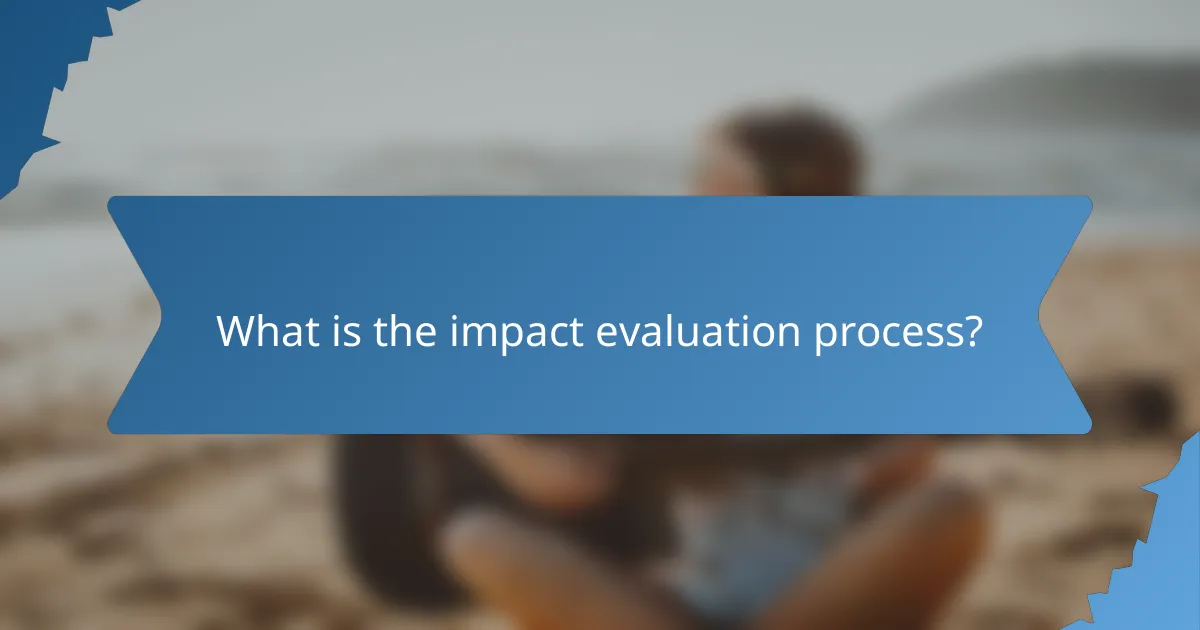
What is the impact evaluation process?
The impact evaluation process assesses the potential effects of a project or intervention, focusing on both positive and negative outcomes. It involves systematic methods to measure the significance and implications of these impacts on stakeholders and the environment.
Impact scoring techniques
Impact scoring techniques involve quantifying the effects of a project using a scoring system. Common methods include qualitative scales (e.g., low, medium, high) or numerical scores that reflect severity and likelihood. For instance, a project might receive scores based on environmental, social, and economic impacts, helping prioritize actions based on total impact scores.
When implementing scoring techniques, it’s crucial to ensure that the criteria are clear and relevant to the stakeholders involved. Regular reviews of the scoring system can help maintain its effectiveness and relevance over time.
Cost-benefit analysis
Cost-benefit analysis (CBA) evaluates the financial implications of a project by comparing its costs to the expected benefits. This method helps determine whether the benefits outweigh the costs, guiding decision-making. For example, if a project costs $100,000 but is expected to generate $150,000 in benefits, it may be deemed worthwhile.
In conducting a CBA, consider both direct and indirect costs and benefits. Be mindful of potential hidden costs, such as environmental degradation or social impacts, which can affect the overall assessment. Sensitivity analysis can also be useful to understand how variations in assumptions impact the outcomes.
Stakeholder impact assessment
Stakeholder impact assessment identifies and evaluates how a project affects various stakeholders, including communities, employees, and investors. This assessment helps ensure that all voices are heard and considered in the decision-making process. Engaging stakeholders early can lead to more informed and accepted outcomes.
To conduct an effective stakeholder impact assessment, map out all relevant stakeholders and their potential interests. Surveys, interviews, and focus groups can provide valuable insights into their concerns and expectations. Regular communication with stakeholders throughout the project can help mitigate negative impacts and enhance positive ones.
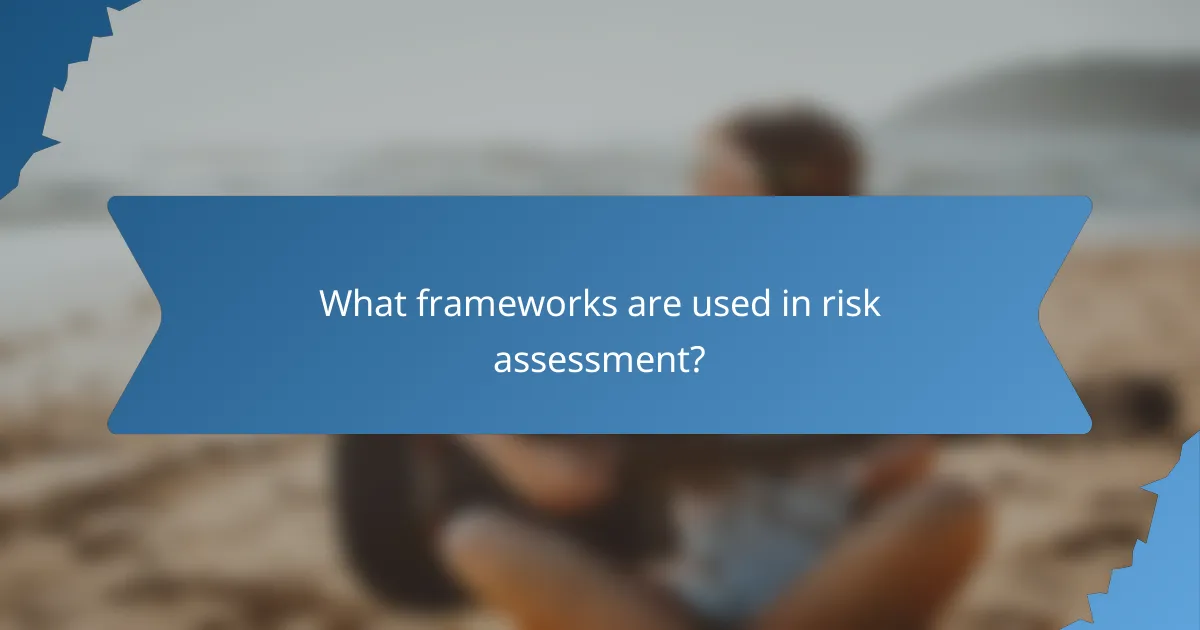
What frameworks are used in risk assessment?
Risk assessment frameworks provide structured approaches to identify, analyze, and manage potential hazards. Key frameworks like ISO 31000 and COSO ERM guide organizations in systematically evaluating risks and implementing effective controls.
ISO 31000 framework
The ISO 31000 framework offers principles and guidelines for risk management applicable to any organization, regardless of size or sector. It emphasizes a structured process that includes risk identification, risk assessment, risk treatment, and continuous monitoring.
Organizations using ISO 31000 should focus on integrating risk management into their overall governance and decision-making processes. For example, a company might conduct regular risk assessments to identify operational risks and develop strategies to mitigate them, ensuring that risk management is part of its culture.
COSO ERM framework
The COSO ERM framework, known as the Committee of Sponsoring Organizations of the Treadway Commission, provides a comprehensive approach to enterprise risk management. It focuses on aligning risk management with organizational strategy and performance, ensuring that risks are managed in a way that supports objectives.
Implementing the COSO ERM framework involves defining risk tolerance, assessing risks in relation to strategic goals, and establishing a risk-aware culture. For instance, a financial institution might use this framework to evaluate market risks and ensure compliance with regulatory requirements, thus enhancing its resilience against potential financial downturns.
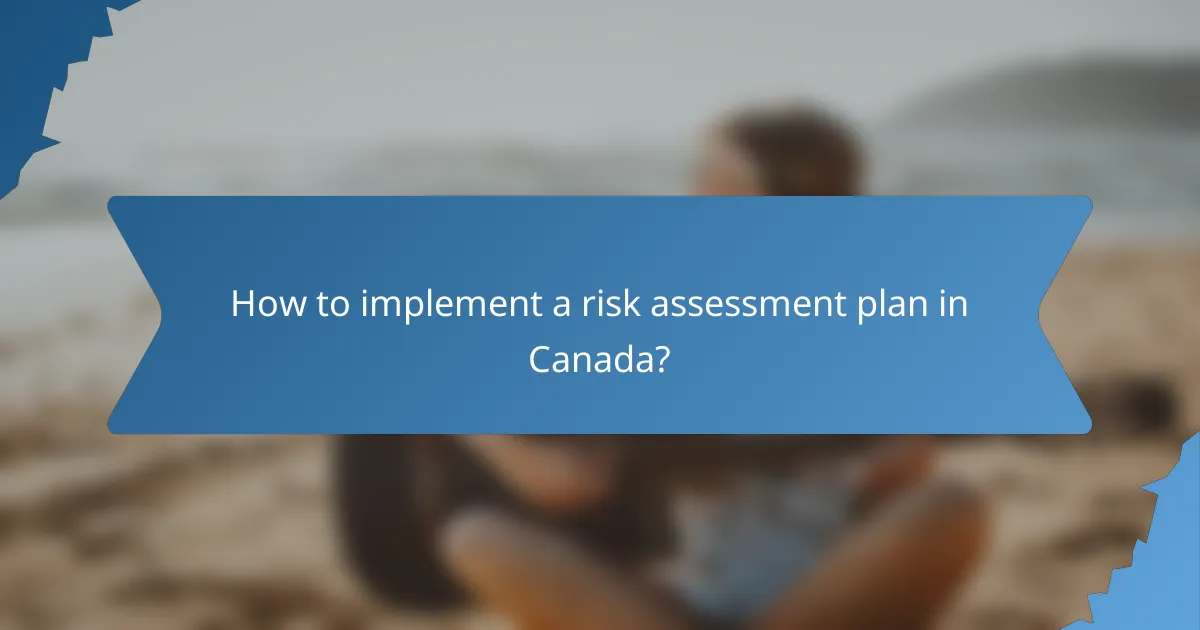
How to implement a risk assessment plan in Canada?
Implementing a risk assessment plan in Canada involves identifying potential hazards, analyzing their likelihood, and evaluating their impact. This structured approach helps organizations manage risks effectively while ensuring compliance with local regulations.
Step-by-step implementation guide
Begin by assembling a risk assessment team that includes members from various departments to ensure diverse perspectives. Next, identify potential hazards relevant to your organization, which could range from physical risks to cybersecurity threats.
Once hazards are identified, assess the likelihood of each risk occurring and its potential impact on operations. Use a simple matrix to categorize risks as low, medium, or high based on these criteria. Finally, develop a mitigation plan for high-priority risks, detailing specific actions to minimize their impact.
Compliance with Canadian regulations
In Canada, organizations must comply with various regulations related to risk management, including the Occupational Health and Safety Act (OHSA) and the Canadian Environmental Protection Act (CEPA). These regulations require businesses to conduct regular risk assessments and implement safety measures to protect employees and the environment.
Ensure that your risk assessment plan aligns with these regulations by regularly reviewing and updating it as needed. Document all findings and actions taken, as this not only aids compliance but also serves as a reference for future assessments and audits.

What tools assist in risk assessment?
Various tools aid in risk assessment by helping organizations identify potential hazards, analyze their likelihood, and evaluate their impact. Utilizing the right combination of software and analytical tools can streamline the risk management process and enhance decision-making.
Risk management software
Risk management software provides a centralized platform for tracking, analyzing, and mitigating risks. These tools often include features for risk identification, assessment, and reporting, allowing teams to visualize risk exposure and prioritize actions effectively.
Popular options include platforms like RiskWatch and LogicManager, which cater to various industries. When selecting software, consider factors such as user-friendliness, integration capabilities, and compliance with relevant regulations.
Data analysis tools
Data analysis tools play a crucial role in assessing risks by enabling organizations to process large datasets and uncover trends. Tools like Microsoft Excel, R, and Python libraries can be used to perform statistical analyses, helping to quantify risks and forecast potential impacts.
When using data analysis tools, focus on collecting accurate data and employing appropriate statistical methods. Common pitfalls include relying on outdated information or failing to account for external factors that may influence risk outcomes.
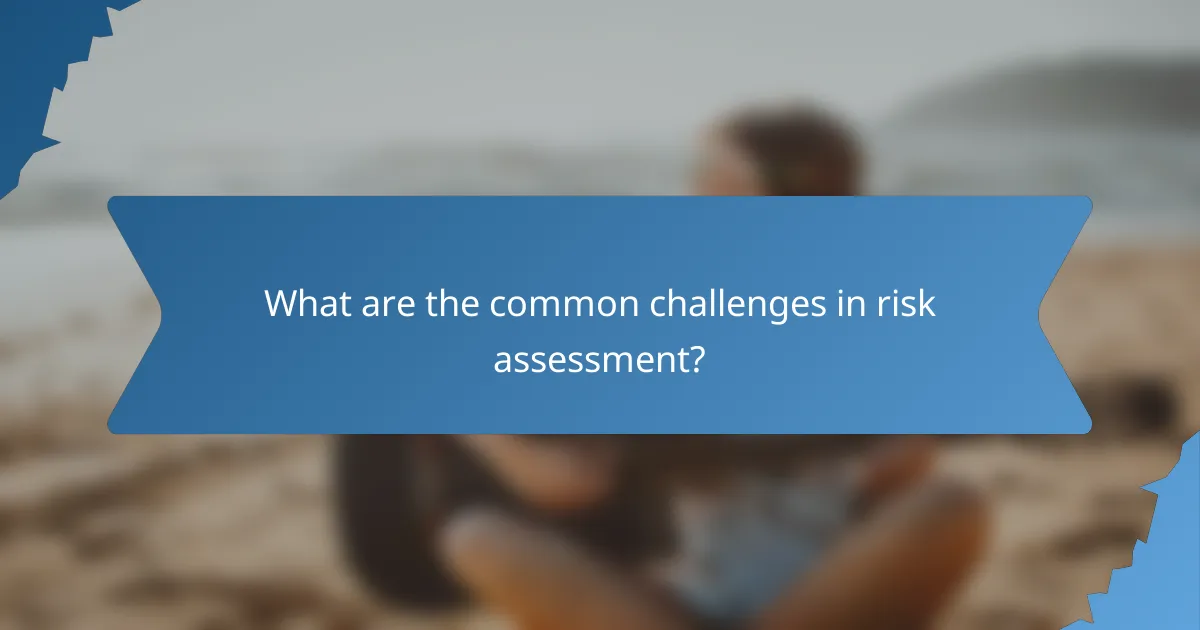
What are the common challenges in risk assessment?
Common challenges in risk assessment include identifying potential hazards, analyzing their likelihood, and evaluating their impact. These challenges can lead to incomplete assessments and misinformed decision-making if not addressed properly.
Identifying potential hazards
Identifying potential hazards involves recognizing anything that could cause harm in a given context, whether in a workplace, project, or environment. This process requires thorough inspections, stakeholder input, and a clear understanding of the operational landscape.
Common pitfalls include overlooking less obvious hazards or failing to consider changes in processes or environments. Using checklists and engaging diverse teams can enhance hazard identification efforts.
Likelihood analysis
Likelihood analysis assesses the probability of identified hazards occurring. This step often involves qualitative methods, such as expert judgment, or quantitative approaches, like statistical modeling.
To improve accuracy, consider historical data and current conditions. A common heuristic is to categorize likelihood as low, medium, or high, which helps in prioritizing risks for further evaluation.
Impact evaluation
Impact evaluation measures the potential consequences of a hazard if it occurs. This includes assessing both direct and indirect effects on people, property, and operations.
Utilizing a scale to rate impacts, such as minor, moderate, or severe, can simplify communication and decision-making. It is crucial to consider both short-term and long-term impacts, as well as the financial implications, which may vary significantly based on the context.
